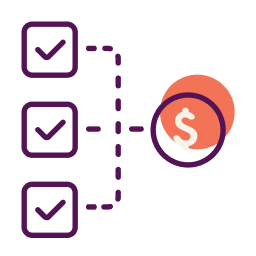Advertiser & Editorial Disclosure
Small businesses are no strangers to challenges, so it’s no surprise that more than half (61%) of employer firms in the U.S. faced a financial challenge in the past 12 months. And top among those challenges? Getting a loan when they need it.
The 2016 Small Business Credit Survey from 12 Federal Reserve banks across the country took place in the last half of 2016, with the banks surveying more than 10,000 employer firms across all 50 states. And while small businesses remain optimistic about the economy as a whole — 61% expect revenues to grow in 2017 and 39% expect job growth this year — many face a hard road ahead when it comes to capitalizing on that growth because of a lack of access to credit.
Why Are Businesses Struggling to Get Loans?
An astounding 87% of firms surveyed relied on the business owner’s personal credit score to access financing, and it’s not just the small companies that aren’t leveraging their business credit scores to get better financing. Those with more than $1 million in annual revenue were only slightly less personal-credit-dependent, with 78% relying on personal credit in some way to get financing. The numbers don’t lie — business owners are underutilizing their business credit scores and relying more so on personal credit.
In the past 12 months, 45% of businesses applied for financing of some form, hinting that there is significant demand for business financing options. Most of these businesses wanted financing to expand operations or pursue a new opportunity, though another large portion were using the funds to cover operating expenses (hinting at the big problem cash flow issues can create for small businesses).
For the 55% of businesses who didn’t apply for credit last year, the majority just didn’t need more financing, which makes sense since many firms reported revenue growth for 2016. However, a few obstacles were common among those who didn’t apply — 27% were worried about taking on debt, 17% were discouraged by low credit scores or other financial setbacks, and 8% found the search too difficult or the cost of credit too high. There are more than 44 different types of business financing, ranging in APR from single digits all the way up to 150% or more. That can be a very intimidating process, especially since many loan types require personal guarantees from business owners in order to get affordable rates or to get approved in the first place.
Nearly one in four businesses who applied for credit last year didn’t get approved. And even if applicants were approved, 60% of them didn’t get the total financing they requested, which can put a major dent in expansion plans or cause businesses with cash flow issues to go under.
How to Set Yourself Up for Approval
While there’s never a guarantee that you’ll get approved for the loan you want, understanding what’s important to lenders can set you on the right path. Here’s how to get started.
1. Build Business Credit
Establishing and building your business credit history gives you much more freedom when it comes to financing options and opens up some of the lowest-cost options on the market.
A good example of this is SBA loans. The most popular SBA loan program — the 7(a) loan — requires a FICO SBSS score for lenders to approve a business. If you haven’t established a credit history for your business, you may be considered “unscoreable” and out of the running. You can check your personal and business credit scores for free at Nav.com.
2. Work on Cash Flow
Cash flow is one of the most important factors lenders examine when approving a business for financing. While not all financing options require business owners to show their current cash flow, the bigger the dollar amount, the more important this factor becomes because of its indication of overall business health. After all, lenders want to get their money back, plus interest, eventually.
3. Get Your Documents Together
Many lenders will want to see a bigger picture of your business health than just credit scores and cash flow. They’ll want your business plan so they can see where you’re headed. They may want tax returns for the past few years. And be prepared to show any other outstanding debts you currently have on your balance sheets. Business financing can take anywhere from a few days to months to get fully approved, so having all your documents at the ready can speed up the process and make it less bumpy.
More Business Financing Options to Consider
This article was originally written on April 18, 2017 and updated on June 28, 2017.


Have at it! We'd love to hear from you and encourage a lively discussion among our users. Please help us keep our site clean and protect yourself. Refrain from posting overtly promotional content, and avoid disclosing personal information such as bank account or phone numbers.
Reviews Disclosure: The responses below are not provided or commissioned by the credit card, financing and service companies that appear on this site. Responses have not been reviewed, approved or otherwise endorsed by the credit card, financing and service companies and it is not their responsibility to ensure all posts and/or questions are answered.